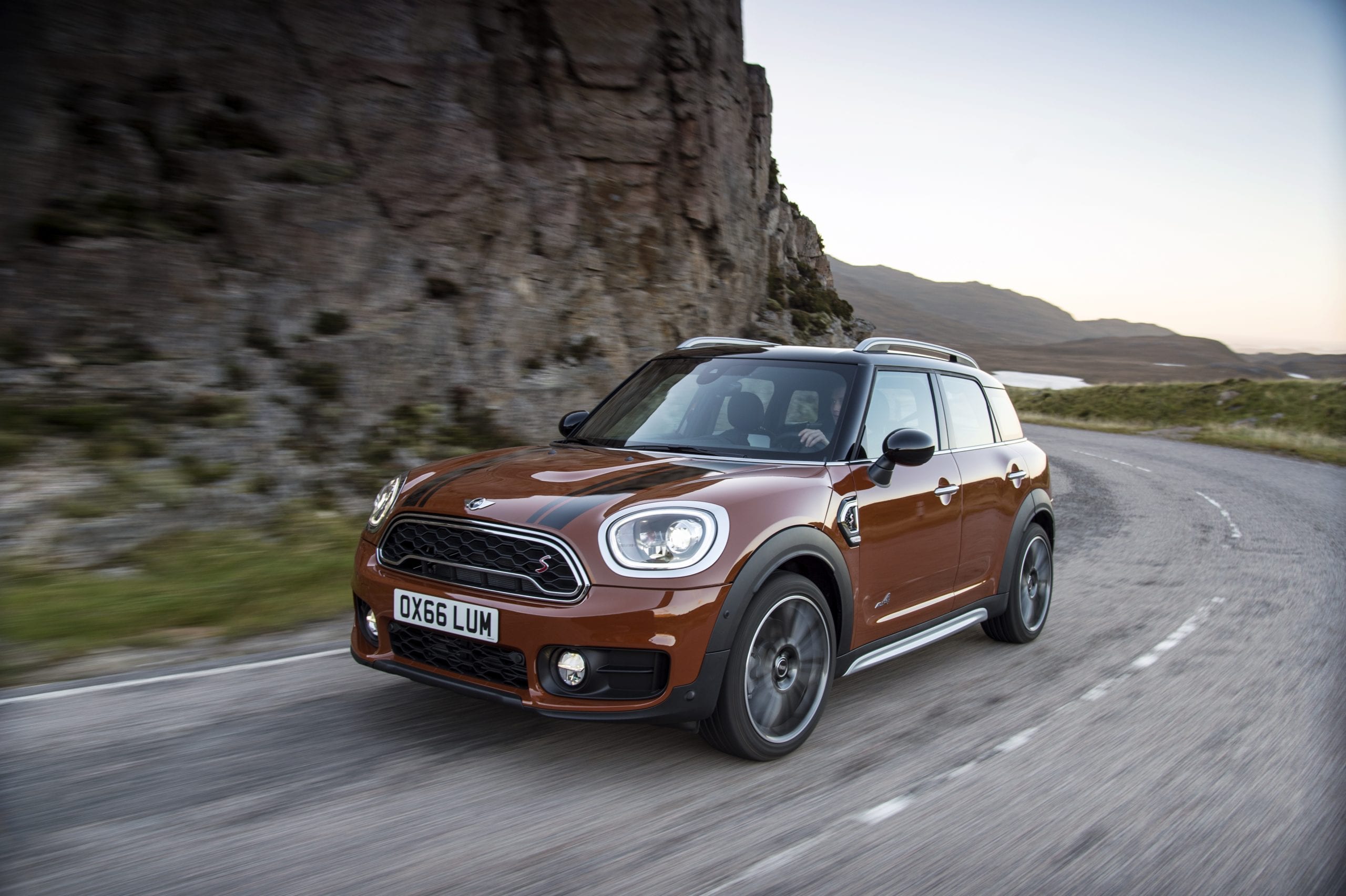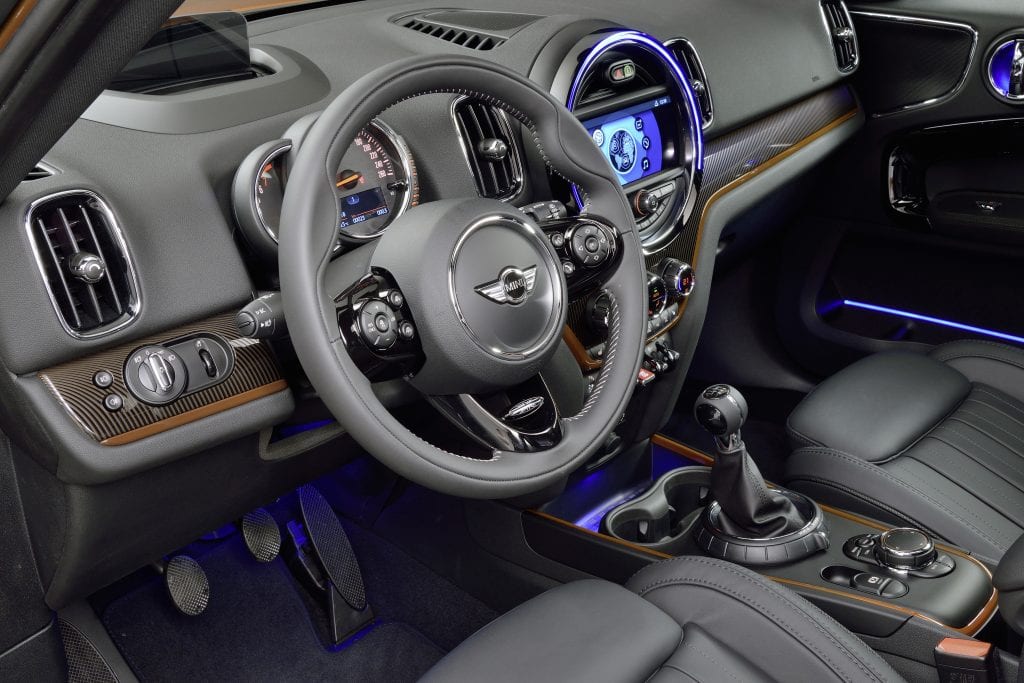West Hartford Automobile Review: Mini Clubman

Audio By Carbonatix

Countrymen shown in image. Photo credit: Mini USA
West Hartford resident and automobile reviewer John Lyons is the founder and chairman of New England Concours d’Elegance.
By John Lyons
British Motor Corporation began production of the Mini in 1959. The distinctive two-door styling became an icon of British automotive culture. Well over five million of the first-generation Mini’s were built by 2000, and they remain very popular in the collector and vintage racing world today.
Just as production ceased on the original Mini, the new version was unveiled at the 1999 Paris Auto Show. It sported a completely updated design that maintained the distinctive features of the original. Since coming back to the U.S. market in 2002, the Mini has been immensely popular, winning car of the year in 2003, and the expanding family of cars includes performance versions, all wheel drive, and larger family-style cars.
For 2017, the Mini is offered in two- and four-door styles, as well as a convertible and hybrid version. For this test, I chose an all-wheel drive six-speed manual version of the Clubman. The Clubman is a four-door wagon featuring side-by-side barn style doors on the rear. It offers more room without taking away the “cuteness factor” of it being a Mini. I also drove the Countryman, which was pretty identically equipped and aside from slightly slower acceleration and lower fuel economy, the cars are fairly similar from a driver’s perspective. Appearance-wise, I found the larger Countryman loses some of the sporty Mini look which the Clubman retains.
The Clubman I drove was equipped with the 134-horsepower 1.5-liter inline three-cylinder engine. It was mated to the standard six-speed manual transmission with power going to all four wheels. A six-speed automatic is available at extra cost.
For a small three-cylinder engine, the car was quite quick with acceleration of 0-60 in just over 8 seconds and a factory claimed top speed of 134 miles per hour. The EPA fuel economy ratings are 25 miles per gallon on town driving and 34 miles per gallon on the highway. The similarly proportioned Volkswagen Golf wagon has similar acceleration and better fuel economy as a comparison.

Mini interior. Photo credit: Mini USA
Like most modern cars, the car was equipped with a toggle switch to start the engine. The car started right up and after disengaging the electronic brake, was ready for driving.
The car accelerates and handles exceptionally well. Its small size and wide stance proportions give it a low and tight feeling, while actually being nearly as large as its platform-sharing BMW. Our car was moderately equipped with a full infotainment system and just about every modern option. Missing from the car – which surprised me – was a backup camera which will be mandatory equipment in all U.S. vehicles starting in 2018. The car had sunroof, satellite radio, and a host of other conveniences and features found on more luxurious cars, such as heated seats and cruise control.
If buying one, stay away from the low-profile wheels and tires as they tend to give off constant low air pressure warnings and tend to be quite annoying for the non-performance minded driver.
The car drove and handled very well. It gives the driver a truly sporty feel even in fairly lightly optioned livery. Fuel economy came in a bit under EPA estimates especially on the highway where 75 mph was an easy and comfortable speed.
I had a few nitpicks, the biggest being the rev matching feature for down shifts. If you drive over the mountain every day and own a manual, you are probably used to having the transmission slow you down to save your brakes. The Mini is equipped with a rev matching feature that idles up the engine to match the down shift the driver is making. This effectively stops the engine’s braking power through the transmission. It cannot be disabled even with a computer software flash. It is highly annoying and this car is one of the rare instances where I would possibly say to opt for the automatic.
A minor complaint is the fuel gauge. Mini uses LED lights to indicate fuel level but it looks cheap, kind of like a battery level indicator on a kids toy. Because a lot of the components are BMW parts-bin items, the car has a similar radio control function as the BMWs currently do. Some find the system annoying. I found it impossible to set the preset buttons on the radio without some work and a check of the owner’s manual. The rest of the gauges and instruments are analog style and very useful and functional.
Regarding value: to me, the car seemed a bit of a bargain. The sticker was $32,000 and the car offered a host of safety and convenience items that if ordered on a BMW 3-Series, would set you back close to $50,000. New Country Mini in Hartford provided the test cars for me, and indicated that factory programs are in place that could land a similarly equipped car below $30,000 out the door. Again, looking at the Golf wagon as a comparison, the VW is lower priced but without many of the amenities that the Mini has. I’ll do a full review of the VW in an upcoming report.
The Clubman’s unique looks and quirky personality make it a fun car that harkens back to the days when drivers of performance cars would wave to one another on the occasion that they passed someone with a similar car. Indeed, I found myself being waved at on more than one occasion as another Clubman driver pulled up alongside or passed me heading in the opposite direction.
Like what you see here? Click here to subscribe to We-Ha’s newsletter so you’ll always be in the know about what’s happening in West Hartford!

Countrymen shown in image. Photo credit: Mini USA



